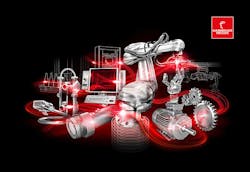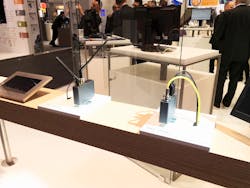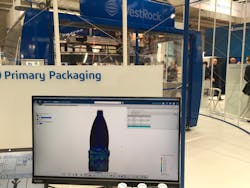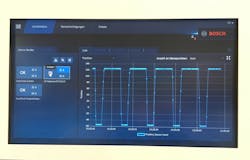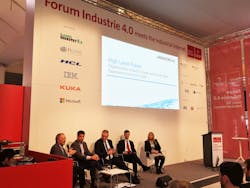From Hannover Messe, 5 Trends to Watch
Hannover Messe Fair is the perfect place to notice trends for the upcoming year. With so many companies presenting and unveiling their innovations, one starts to see the key features that will become crucial to the engineering industry. Here are five trends that we picked up on this year:
- Digitization
Several of the technologies displayed were centered around the digital world. This included transferring several things to the digital space. Examples are having engineering documents on cloud servers, offering communications and alerts through network and cloud services, and offering higher degrees of simulation. The prime example of this would be IBM Watson. On display, IBM shared a case study where Woodside, a petroleum company, had used Watson to catalog all of its engineering documents including manuals, drawings, and lessons learned. Watson cannot only analyze 600,000 pages in three seconds, but also understand natural speech and intent. Senior engineers also recorded their common knowledge with Watson through conversation. As a result, new engineering employees can interact with Watson to obtain knowledge from several different sources.
The MICA connectors from Harting allow even legacy products to collect data. The connectors interface with legacy equipment to help collect data from older systems.
- The Digital Twin
The Digital Twin or the Virtual Twin is an increasingly exciting concept among not just software analytic companies, but also industrial companies. The idea is that the entire process from beginning to end is modeled and analyzed to find potential errors, process improvements, areas for efficiency, and design guides. While simulation at this level is not new, several companies like Bosch Rexroth, GE, Siemens, and Dassault Systemes are promoting their services behind the idea. Siemens’ Klaus Helmrich, managing board member of Siemens AG, said that the digital twin “will allow customers to design and test with no need of prototyping” and that testing and planning virtually is possible with “the digital twin across the entire value chain—for products, for production, and complete plants.”
The Dassault Systemes “Digital Factory” allows a user to design a product and manufacturing facility from the ground up including every possible feature from product design, manufacturing, transport, and even plant-floor layout.
- Data Analytic Services
Data analytics is a byproduct of the Internet of Things (IoT). As we increase the number of devices that can capture data, the more we will need people and software to analyze that data. Several companies are now offering data analytical services besides just selling you the hardware. The growing trend of data as a service will increase well beyond 2017. At the Microsoft Press Conference, it was reported that IoT would lead to 2 million job openings by 2020 and the IDC analysis group predicts that by the end of 2017, 60% of manufacturers will shift their focus to analytics from sensors and hardware.
Bosch Software (shown above) is collecting data and analyzing based on set parameters, thus providing the user with straightforward information rather than raw data.
- Ease of Use via Apps and Notifications
To help make this data more accessible, there has been greater development of apps. Several companies are now offering apps that directly interact with their hardware devices to obtain data via the cloud. Companies like Eaton, Rockwell, and Festo have all developed smart-device apps that can access said data, making it easier for the user to stay connected.
Rockwell Automation “Factory Talk Analytics” provides users on the floor with updates and alerts right to their mobile device.
- Partnerships
To keep up with the pace of innovation, several companies have formed partnerships to help extend their areas of reach. As discussed on the panel “Digitalization of Industry Large and Small: Real Experience from the Field” hosted by Industrial Internet Consortium, investment does not always mean developing new technology. Developing new technology can be a costly process, particularly if you do not have the resources to start a technology from scratch. According to panelist Philipp Hahn-Woernle, CEO of Viastore Systems, “there will be no golden standard; successful companies will be based on how well they adapt… [and] investment does not always mean development but to sometimes partner with existing companies,” Examples of major company partnerships are Rockwell Automation with Microsoft and Telekom Systems with Eaton.
